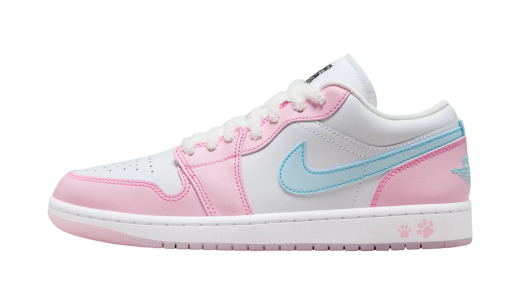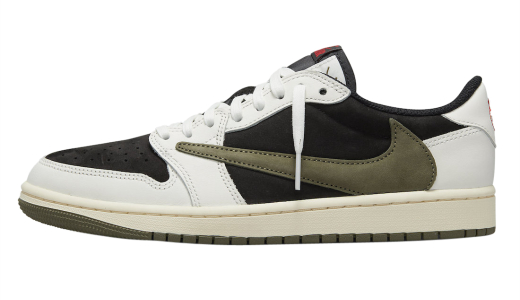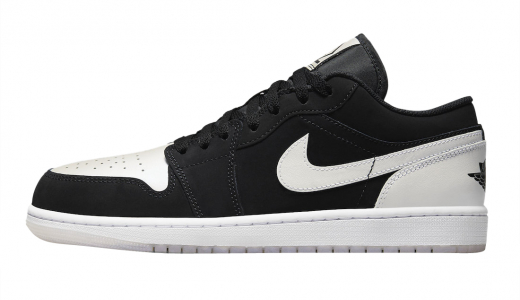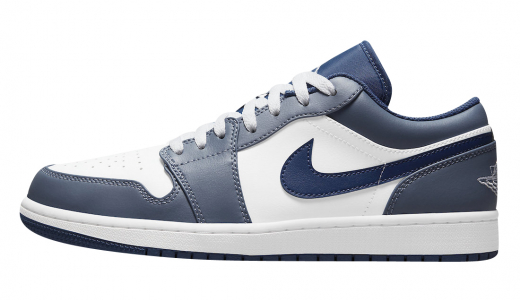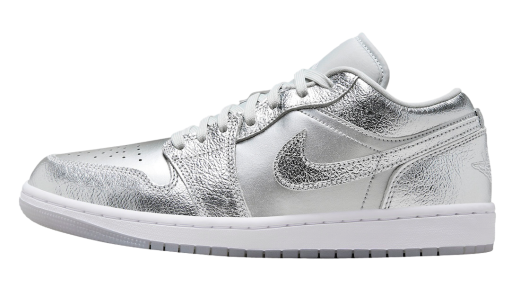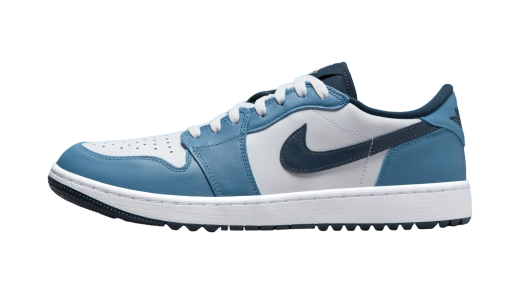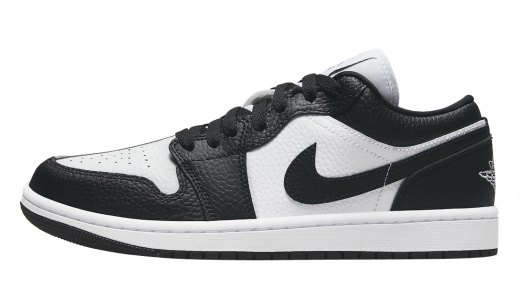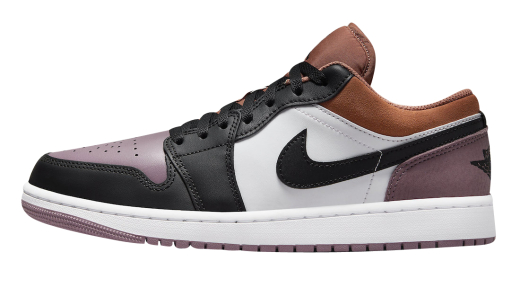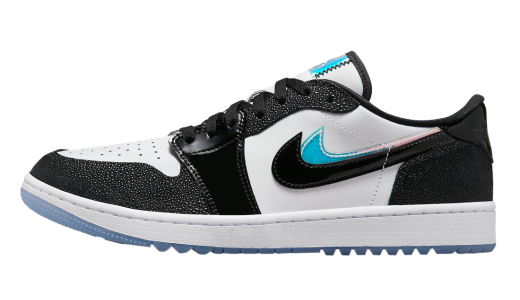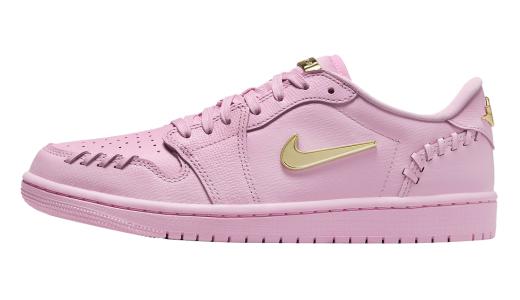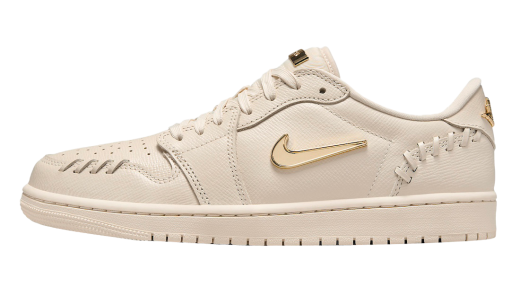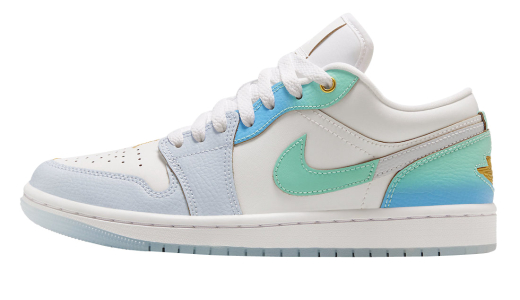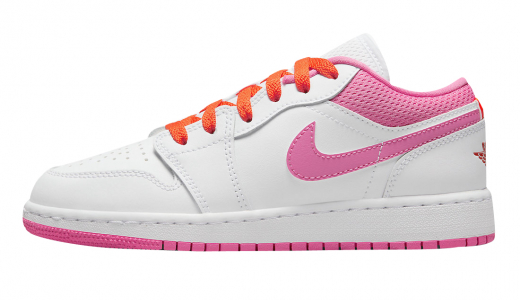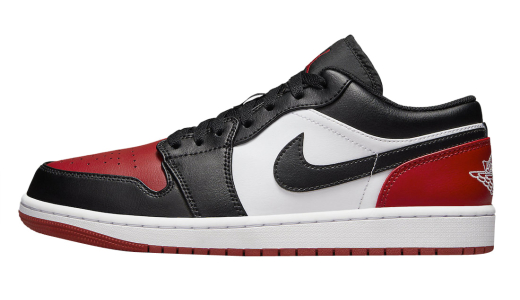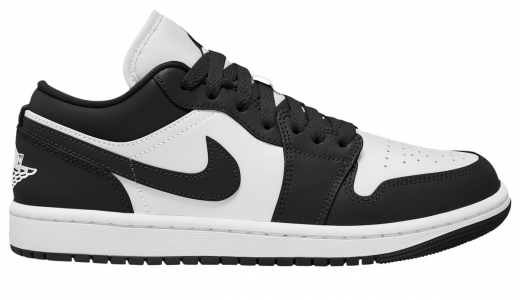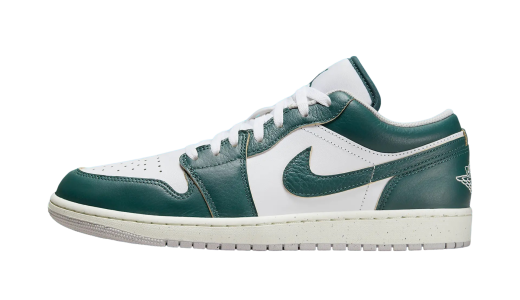Air Jordan 1 Low
The Air Jordan 1 Low is a celebrated sneaker that embodies the timeless spirit of Michael Jordan's basketball legacy. Initially released in 1985, the Air Jordan 1 revolutionized the sneaker industry and continues to be a cultural icon in both sports and fashion. The low-top version of this legendary shoe offers a more casual and versatile twist on the classic high-top design. Available in a myriad of colorways, the Air Jordan 1 Low combines the traditional sleek silhouette with modern materials and technology. This makes it an ideal choice for those seeking both style and comfort, whether on the basketball court or in everyday life.
The enduring popularity of the Air Jordan 1 Low can be attributed to its impeccable design and its deep-rooted connection to sneaker culture. Its leather upper, combined with the iconic swoosh and the classic Air Jordan wings logo, delivers a nostalgic yet contemporary appeal. The lightweight construction and responsive cushioning ensure optimum performance while promoting a leisurely vibe. Over the years, this sneaker has transcended its athletic roots, becoming a staple in various streetwear and fashion circles. With collaborations from renowned designers and frequent updates to its color palette, the Air Jordan 1 Low remains a sought-after addition to any sneaker enthusiast's collection.
History of Air Jordan 1 Low
The Air Jordan 1 Low, a sneaker that has transcended the realms of sports and fashion, has a rich and storied history. To fully appreciate the significance of this model, it is important to delve into its origins, cultural impact, and evolution over the years.
Origins and Initial Release
The roots of the Air Jordan 1 Low trace back to the inception of the original Air Jordan 1, which made its debut in 1985. The Air Jordan 1 was designed by Peter Moore and was the first signature shoe for Michael Jordan, the legendary basketball player. At the time, Michael Jordan's partnership with Nike was unprecedented, and it marked a significant turning point in both sports and sneaker culture.
The Birth of the "Low"
The Air Jordan 1 was initially released in its high-top form, which was instantly recognizable on the basketball court. However, recognizing the need for versatility and catering to different preferences, Nike introduced the low-top version of the Air Jordan 1 in 1986. The low-top iteration retained many of the design elements of its high-top counterpart, including the iconic "Wings" logo, Swoosh, and distinctive colorways, but offered a lighter and more casual option for off-court wear.
Initial Reception and Cultural Impact
While the high-top Air Jordan 1 garnered much attention and controversy—thanks in part to the NBA banning its red and black colorway for violating uniform regulations—the low-top version was embraced warmly for its stylish versatility. It quickly became a favorite in streetwear, offering a more civilian-friendly version of the iconic high-top sneaker.
In the late 1980s and early 1990s, the Air Jordan 1 Low began to appear more frequently in the urban fashion scene. Sneaker enthusiasts and casual wearers alike appreciated the shoe’s sleek design and connection to Michael Jordan. The Air Jordan 1 Low slowly but steadily became a staple in sneaker culture.
Key Releases During the 1990s and Early 2000s
The Air Jordan line continued to evolve throughout the 1990s, with new models being introduced almost every year. However, the Air Jordan 1 Low maintained its steady fan base. During this time, Nike released several notable colorways and collaborations that further cemented its status in sneaker lore.
In the early 2000s, retros of the Air Jordan 1 High and Low began emerging, sparking nostalgia among longtime fans and attracting a newer generation who had missed the original releases. The early 2000s saw the release of several notable Low editions, including the "White/Metallic Silver," "White/Varsity Red," and various player-exclusive and collaborative versions. The renewed interest in the Air Jordan 1 Low showcased the model's enduring appeal.
The Resurgence of Retro and Collaborations
As sneaker culture exploded in the 2010s, fueled by social media, celebrity endorsements, and a growing interest in sneaker collecting, the Air Jordan 1 Low experienced a resurgence. Sneaker brands, including Nike, recognized the potential for tapping into the nostalgia of classic designs while introducing innovative twists.
The latter part of the 2010s and early 2020s saw numerous high-profile collaborations involving the Air Jordan 1 Low. Some of these collaborations became instant classics and were highly sought after by collectors. Notable collaborations included those with skateboarder Eric Koston, artist Travis Scott, and fashion label Dior.
- **Eric Koston Collaboration**: A well-known figure in the skateboarding world, Eric Koston’s reinterpretation of the Air Jordan 1 Low brought a new dimension to the shoe. By merging skate culture with basketball heritage, the collaboration resonated with a diverse fan base.
- **Travis Scott Collaboration**: One of the most influential figures in modern pop culture, Travis Scott's partnership with Nike led to the creation of highly coveted versions of the Air Jordan 1 Low. Featuring unique design elements like reverse Swooshes and hidden compartments, the Travis Scott editions became extremely popular and sold out almost instantly upon release.
- **Dior Collaboration**: In one of the most luxurious and unexpected crossovers, Nike teamed up with French fashion house Dior to produce a limited edition Air Jordan 1 Low. Combining luxury materials with classic design cues, this collaboration was a testament to the Air Jordan 1 Low's versatility and wide-reaching influence.
Technological Innovations and New Designs
In addition to collaborations, Nike continued to experiment with new materials and technologies in the Air Jordan 1 Low. Advances in sneaker technology meant the shoe could offer better comfort, support, and durability than ever before. This included the use of premium leather, updated cushioning systems, and different types of fabrics to enhance the sneaker's overall performance and aesthetic appeal.
Impact on Modern Sneaker Culture
The influence of the Air Jordan 1 Low extends beyond just being a stylish sneaker. It has played a significant role in the intersection of sports, fashion, and pop culture. As a symbol, it represents a merging of athletic excellence (Michael Jordan's legacy), streetwear authenticity, and the power of collaborative creativity.
Community and Cultural Significance
The Air Jordan 1 Low is more than just a sneaker; it’s a cultural artifact that has captured the imaginations of multiple generations. It speaks to a diverse audience: from die-hard basketball fans who revere Michael Jordan, to fashion enthusiasts who appreciate the shoe’s style, to casual wearers who value its comfort and heritage.
Sneaker culture, which has grown into a global phenomenon, owes much to iconic models like the Air Jordan 1 Low. Sneaker conventions, reselling markets, and online sneaker communities thrive on the passion and interest centered around such models. The Air Jordan 1 Low's enduring popularity is a testament to its ability to adapt and remain relevant in an ever-changing cultural landscape.
Conclusion
The history of the Air Jordan 1 Low is a story of innovation, cultural significance, and timeless style. From its origins as a modified version of the Air Jordan 1 to its role in shaping modern sneaker culture, the Air Jordan 1 Low has proven itself to be much more than a mere accessory. It has become an enduring symbol of athletic excellence, artistic collaboration, and cultural evolution.
Whether it's through its groundbreaking collaborations, impactful retros, or integrating new technologies, the Air Jordan 1 Low continues to captivate and inspire. Its legacy is a testament to the power of design, the allure of sports memorabilia, and the unifying force of culture. So as long as sneakers remain a cultural cornerstone, the Air Jordan 1 Low will undoubtedly continue to be a significant part of that narrative.
